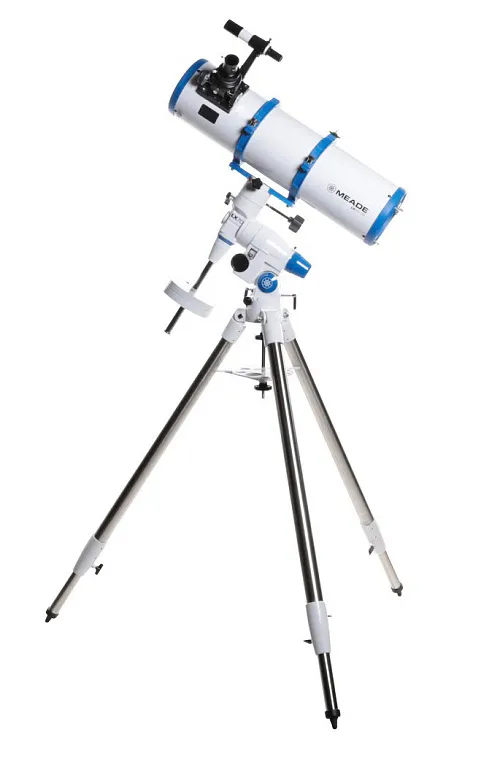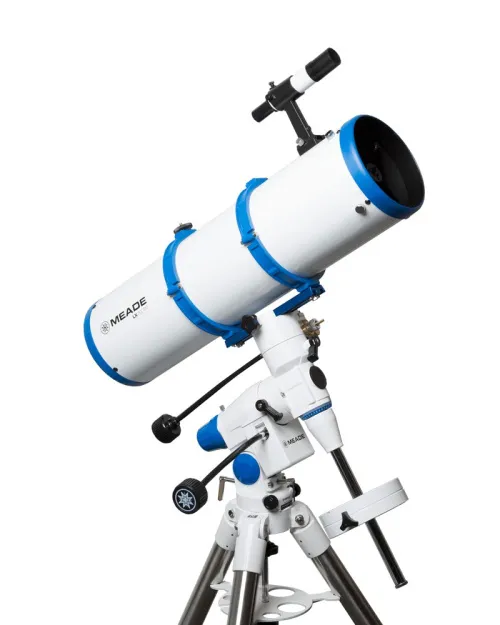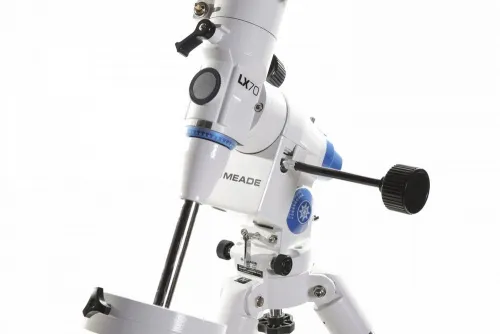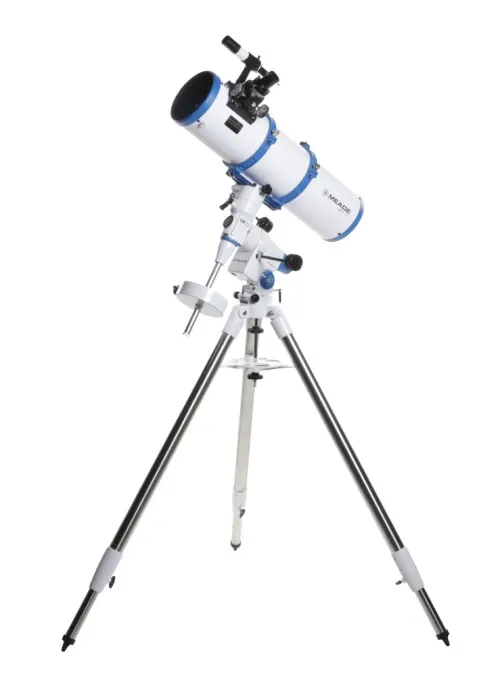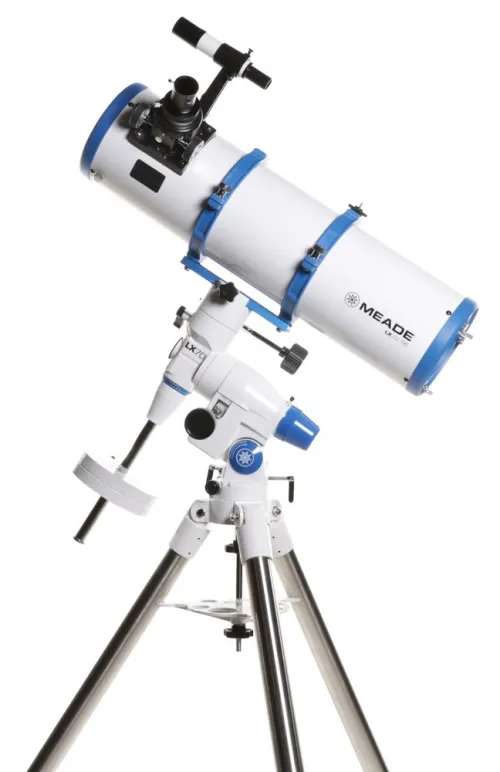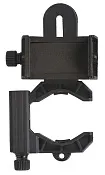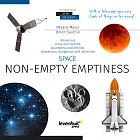Meade LX70 R6 6" EQ Reflector Telescope
Newtonian telescope. Primary mirror diameter: 150mm. Focal length: 750mm
| Product ID | 71686 |
| Brand | Meade Instruments Corp. |
| Warranty | 2 years |
| EAN | 0643824208919 |
| Package size (LxWxH) | 111x53x44 cm |
| Shipping Weight | 30.46 kg |
The Meade LX70 R6 6" Newtonian Reflector is equipped with a high-quality f/5 parabolic primary mirror. This fast f/5 optical system provides spectacular wide-field images for the discriminating deep-sky observer and astro-photographer. Its 6” aperture allows it to resolve details down to 0.76 arc-seconds across and can be viewed using the two included 1.25" Plössl eyepieces (9mm & 26mm). The 6x30 optical viewfinder with cross-hair reticle makes locating faint object quickly and easily. The 2" Crayford-style focuser ensures smooth motion when focusing.
Meade LX70 German Equatorial mount. This high quality mount includes slow-motion controls for both RA and Declination and a heavy-duty, fully height adjustable tripod (33" to 46") with steel legs. Advanced features include including brass worm-gear drives on both axes for smooth tracking performance, aluminum setting circles and a built-in leveling bubble. The slow-motion control cables make it easy to track objects even on those frigid nights when wearing gloves is a necessity.
Precision push-pull adjustments in both azimuth and elevation make accurate polar alignment a breeze while the elevations built-in latitude scale will help you dial in your site latitude quickly.
The mount includes a vixen-style dovetail for mounting any Meade or third party optical tube having this common and standardized type dovetail rail and up to approximately 9kg in weight. Mount weight fully assembled is 9.5kg, including tripod, but excluding counterweights. Single 5.2kg counterweight included.
The Meade LX70 mount is designed to keep you looking up for many years to come.
Features:
- 150mm (6") f/5 Newtonian reflector – 750mm focal length
- Fast F/5 parabolic primary mirror
- Two 1.25" Plössl eyepieces (9mm & 26mm)
- 2" Crayford-style focuser
- 6x30 viewfinder
| Product ID | 71686 |
| Brand | Meade Instruments Corp. |
| Warranty | 2 years |
| EAN | 0643824208919 |
| Package size (LxWxH) | 111x53x44 cm |
| Shipping Weight | 30.46 kg |
| Optical design | reflector |
| Optical scheme | Newtonian |
| Primary mirror diameter (aperture), mm | 150 |
| Lens (mirror) shape | parabolic |
| Focal length, mm | 750 |
| Aperture ratio | f/5 |
| Resolution threshold, arcseconds | 0.76 |
| Eyepieces | Plössl 9mm, Plössl 26mm (1.25") |
| Finderscope | optical 6x30 with cross-hair reticle |
| Focuser | 2", Crayford, with 1.25" adapter |
| Tripod | steel |
| Tripod height (adjustable), mm | adjustable, 838–1168 |
| Mount | equatorial |
| Slow-motion controls | along both axes |
| Counterweights | yes |
| Positioning accuracy | <1 arc-second (with StarLock) |
| Optical tube mounting mode | dovetail plate (Vixen standard) |
| Dovetail mount | ✓ |
and downloads
Convenient diagrams that describe how to install additional accessories on refractors and catadioptric telescopes
Find out how to assemble a telescope on an example of the Levenhuk Skyline 90x900 EQ telescope
This short guide will help you avoid typical mistakes and learn more about telescope and mounting types
The basics of astronomical observations for beginners
In this article we have gathered answers to some of the most frequently asked questions about telescopes
How telescopes work?
You can actually perform observations from your balcony!
All about telescope sizes, types, magnification, and mounts
Learn how to set up and use the telescope properly
Astronomy in light-polluted skies. Find out what you can observe in the city
Read an interesting comprehensive article on telescopes for little astronomers
Celestial objects you can observe with telescopes of different apertures
Colored and vivid images of galaxies, planets and star clusters entrance everyone who is fascinated by boundless space
Find an interesting review on the history of the changes to a refracting telescope
To make the process of choosing a telescope easier, we will tell you about the characteristics of the most popular types of telescopes today
Learn everything you need to know about refractor telescopes to make the right choice

